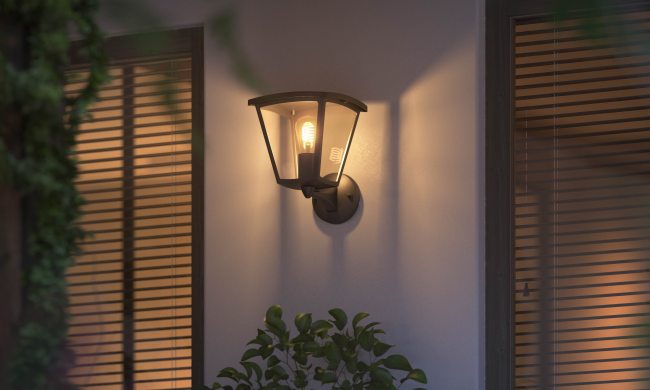- Rich and vibrant colors
- Very bright light output
- Bluetooth connectivity option
- Unique-looking design
- It's on the pricey side
- Can't cycle through colors on its own
When the original Philips Hue Iris launched in 2014, smart lighting was still in its infancy and a relatively new concept for many consumers. Fast-forward to the present, and the company is giving us an updated version of its popular table lamp, complete with Bluetooth connectivity, richer colors, and increased brightness — all for $100. I never got the chance to use the original, but I appreciate the new version of the Philips Hue Iris for adding a bit of color to my life.
A different-looking table lamp
The Philips Hue Iris has a spotlight-like design that features a transparent plastic base and fabric-wrapped cord. Honestly, it’s hard for me to classify it as a table lamp because it’s unlike any other table lamp I’ve used. It’s not meant to act as a reading light, nor is it designed like a traditional table lamp meant for a side table in my living room — it would look out of place if I placed it there.

Then again, its orblike design is certainly what makes this table lamp unique. Initially, I struggled to accept its peculiar design style, but that slowly washed away the instant it came to life.
Hypnotic glow
The lamp is a glowing ball of magic that’s best suited for bookshelves, desks, or corner tables. It’s meant to act more as an accent light than anything else, helping to add a bit of color to a room. When it’s turned on, the glow of the transparent base is hypnotic, and I like that the light coming from it is softened by the diffusing panel that covers its top. This diffusion helps to produce a soft, even lighting that’s not too harsh and d0esn’t cast too many shadows.
The glow of the transparent base is hypnotic.
If there’s one annoyance I have about smart light solutions, it has to be that some of them are simply weak, underpowered, and lack enough saturation. Luckily, that’s not a problem with the Philips Hue Iris, which is able to reach up to 570 lumens when using white light. That’s plenty enough to read books without strain.

Even better is the level of saturation that the Philips Hue Iris is able to achieve. Compared to another set of smart LED light bulbs I use, the Iris is able to cast deep, rich colors. Blues, greens, and reds all have sufficient saturation and brightness to catch my attention. I personally prefer placing the Iris on a counter facing a corner, seeing that the upward direction of the light combined with the diffusion results in wider coverage. One feature I’ve grown to like with other lamps is the option to cycle through different colors automatically. Unfortunately, that’s not an option here, as you can only set one color at a time.
Works without a Philips Hue bridge
Since I’ve been using the Philips Hue system in my apartment for a long while, I got the Iris to connect to my Hue bridge for remote access when I’m not at home. However, it should be noted that you don’t need a Philips Hue bridge to use the Iris. That’s because this updated version features Bluetooth connectivity for direct access through the Philips Hue app. This is a useful option to have if you haven’t bought into the Philips Hue ecosystem yet.

Connecting the Iris to the bridge simply means more controls — like color combinations with other Philips Hue lights and automations. Through the app, I’m able to set it so that it automatically turns on at sunset and turns off at 1 a.m. every night. You can also achieve even more complex automations, such as having it turn on whenever the door sensor on your front door is tripped — or when you announce to Google Assistant you’re home. You’ll get the most out of the Iris with advanced automations.
Our take
The Philip Hue Iris complements any room in the home with its hypnotic glow. You’ll need to fork over $100 to pick it up, which isn’t cheap, but well worth the cost given how swell it is in casting various colors of the rainbow to accent rooms and your mood.
How long will it last?
The plastic construction makes it feel on the hollow side, so you’ll want to make sure that the power cord is snaked so it’s out of the way of foot traffic. If you’re concerned about the LED bulb inside of it, just know it’s rated for 25,000 hours. There’s also a 2-year limited warranty that covers the Iris from defects in material and workmanship.
Is there a better alternative?
When it comes to brightness and saturation, you won’t find something else that can match its power. However, there are other smart table lamps, like the Xiaomi Bedside Table Lamp, that is half the cost. It’s certainly not as saturated or bright, but can still act as a complementary accent light.
Should you buy it?
It’s an ideal solution if you’re looking to expand the smart lighting in your home beyond traditional smart LED light bulbs. You’ll fall in love with the hypnotic glow of the Iris, as well as how brilliantly it casts accent lights onto walls and ceilings.





